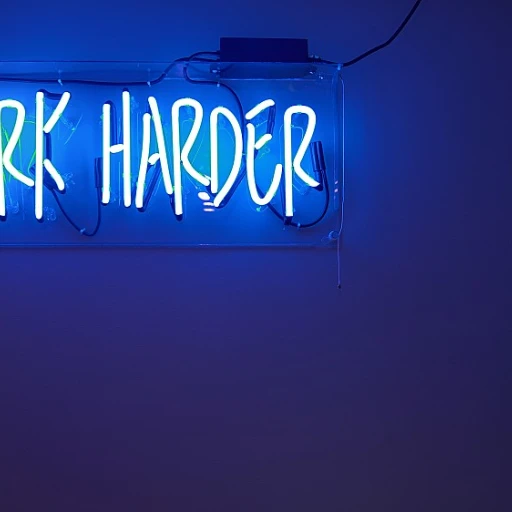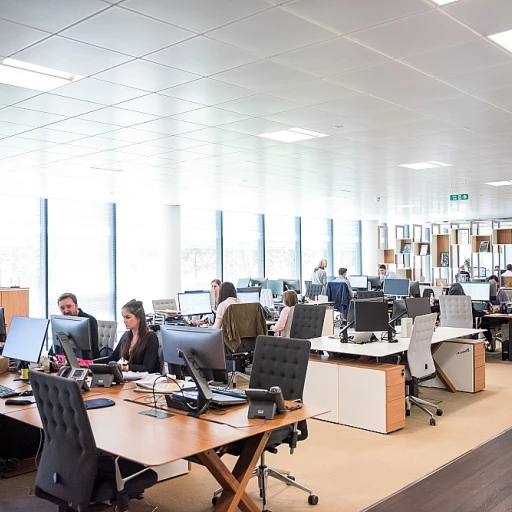-teaser.webp)
Understanding the Current Workforce Landscape
Analyzing the Workforce Landscape
The initial step in workforce planning involves gaining a comprehensive understanding of the current workforce landscape within your company. This strategic process starts with posing the right questions to senior leaders about the composition and capabilities of the employees and how these align with the organizational goals and strategies.
When considering the existing workforce, various factors come into play, including the current size and structure of the team, the roles each employee fulfills, and the overall company culture. Senior leaders need to explore questions like: Is the current team set-up efficiently? Are there potential areas for optimizing performance? What's the level of employee engagement?
Exploring these queries will help leaders identify potential gaps and understand the strengths and weaknesses of their organization's workforce. Understanding these elements is vital to develop long-term strategies and address any existing challenges. For instance, how does the cultural aspect of the organization support or hinder strategic goals? Does the leadership style promote adaptability and innovation? These strategic questions ensure that leadership is well-prepared to tackle industry trends and potential disruptions.
Leaders need to anticipate challenges by understanding their workforce, which involves asking insightful interview questions about employee satisfaction and productivity. This insight forms the basis of a more profound strategic conversation about workforce needs, thereby steering clear of short-term fixes in favor of long-term success.
For senior executives, diligence in querying the current workforce landscape provides clarity on positioning the organization strategically. Taking the time to delve into these enquires also supports effective decision making, promoting a balance between nurturing a successful workforce and achieving business objectives. Learn more about optimizing workforce planning with high-performance strategies as you align your workforce with future business aspirations.
Aligning Workforce Planning with Business Goals
Aligning Strategic Workforce Goals with the Business Vision
In the pursuit of aligning workforce planning with business goals, it is vital to raise pertinent questions that will direct strategic efforts in the right direction. Senior leaders within an organization must display a unified understanding of the company's overarching mission, as well as the strategic objectives that the workforce will help achieve. Questions that address this alignment can be instrumental in evaluating whether the current workforce initiatives are effectively contributing to the organization's success:- What are the key business challenges that our organization is currently facing, and how does workforce strategy support resolving these challenges?
- How do we ensure that our workforce planning aligns with the long-term vision and strategic objectives of the company?
- How can we leverage current industry trends and changes in leadership style to strengthen our workforce capabilities in line with business strategy?
Identifying Skills Gaps and Future Needs
Exploring Emerging Skills and Roles
To address future business needs, it is essential for senior leaders to identify the skills gaps that currently exist within the organization. This focus on skills and future roles not only aligns with strategic goals but also anticipates industry trends and changes, thereby preparing the workforce for upcoming challenges.
When engaging with leaders, it is constructive to ask a few strategic questions to uncover these gaps effectively:
- How well do you understand the key skills that our team requires for upcoming projects?
- What specific roles do you predict will evolve or emerge over the long term?
- What challenges might we face in acquiring these skills, and how can we address them strategically?
These questions not only determine current skills deficiencies but also gear the organization towards targeted employee engagement practices that enrich professional development. This strategy will help in retaining and attracting the right talent, ensuring the company maintains a competitive edge in the industry.
Incorporating Critical Questions in Strategic Discussions
Senior leaders should continually pose questions that stimulate strategic decision making. Inquiring about upcoming skill demands and the resources available will foster a culture that supports both business success and workforce fulfillment. Leaders are encouraged to incorporate the following questions:
- What measures can be taken to ensure effective ongoing training for team members?
- How can technology support identifying and filling skills gaps more efficiently?
- Are there any digital transformation initiatives that could support our goals in closing skills gaps?
Employing a comprehensive approach like this enables organizations to adapt in response to change while maintaining focus on strategic priorities. Understanding strategies and tools like a compensation ratio calculator can further streamline this process by aligning compensation with the strategic value of emerging and existing roles.
Leveraging Technology in Workforce Planning
Integrating Technology for Effective Workforce Solutions
Technology has become an indispensable component in workforce planning, enabling organizations to streamline operations and make informed decisions. Senior leaders play a crucial role in harnessing technological advancements to align workforce strategies with overall business goals. The following strategic questions will help leaders integrate technology effectively:- How can technology support our workforce planning goals? Understanding how technology can address current challenges and anticipate future needs is essential. Senior executives should evaluate whether existing systems effectively support decision making and employee engagement.
- What tools will help in identifying long-term skills gaps? Leveraging technology to perform skills assessments and predict future needs ensures the organization remains competitive. Strategic solutions like AI and analytics platforms can offer insights into industry trends and help devise plans to address skills shortages.
- How can data analytics enhance strategic decision making? By using data-driven approaches, senior leaders can move away from intuition-based methods. This transition leads to more effective problem solving, offering detailed insights into workforce trends and company culture.
- Are we optimizing digital transformation to foster adaptability? The right technology can promote a culture of innovation and adaptability. This question explores whether the organization is fully utilizing digital tools to streamline workflows and foster a supportive leadership style.
Fostering a Culture of Adaptability and Innovation
Encouraging an Innovative Workforce
Fostering a culture that thrives on adaptability and innovation is essential for companies aiming to stay competitive in a rapidly changing business environment. Senior leaders play a crucial role in cultivating such an atmosphere. One of the strategic questions to ask is, how can the leadership team inspire innovation and adaptability among team members? This question explores the extent to which leaders can nurture a willingness to embrace change within their organization.- Promote Open Communication: Encourage leaders to create an environment where all employees feel comfortable sharing ideas and feedback. Open communication channels often lead to innovative solutions and enhance overall employee engagement.
- Reward Creative Problem Solving: Recognizing and rewarding employees who exhibit innovative thinking fosters a culture where creativity is seen as integral to the company culture and its long-term strategy.
- Integrate Flexibility into Policies: By allowing for flexible work schedules and environments, organizations can support creativity and adaptability, enhancing both employee satisfaction and productivity.
- Invest in Ongoing Learning: Offering opportunities for continuous learning and upskilling helps employees stay abreast of industry trends and challenges, enabling them to contribute more effectively to the company's strategic goals.
Measuring Success and Continuous Improvement
Tracking Progress for Continuous Advancement
In an ever-evolving business landscape, senior leaders must focus on measuring the success of workforce planning efforts. This importance cannot be overstated, as it directly impacts the organization's ability to adapt and thrive amidst challenges. Effective measurement ensures that the workforce strategy remains aligned with business goals, offering insights into what works and what needs improvement.
An essential starting point is the establishment of clear metrics and KPIs that reflect both short-term achievements and long-term aspirations. These metrics should be closely tied to strategic questions, fostering a culture of continuous improvement and employee engagement. Leaders should ask themselves, "Are we meeting our workforce planning goals, and how are we tracking this progress over time?" This question explores the essential alignment between planning efforts and overall company success.
Additionally, it's crucial to foster a team-oriented approach involving various team members. By doing so, senior executives can cultivate a culture that prioritizes adaptability and innovation. This collaborative environment encourages open communication and problem-solving among senior leaders and their teams.
Furthermore, leveraging digital transformation and contemporary tools can significantly streamline measuring success. This technological integration not only enhances decision-making capabilities but also provides real-time insights into workforce trends. Questions like "How can we utilize technology to better track our workforce planning progress?" can guide leaders in optimizing their strategies.
Finally, regular feedback from team members and leaders can help refine processes and strategies. Senior leadership should remain open to adapting their leadership style based on industry trends and the unique needs of the organization. By continuously revisiting and refining their strategic approach, senior leaders ensure a sustainable path to performance success in workforce planning.














